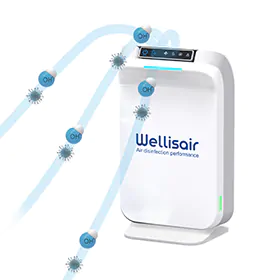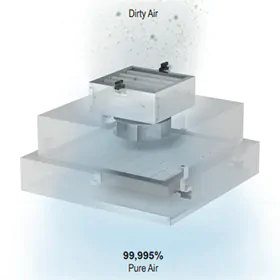During these uncertain times, we must be equipped with the right tools to fight viruses and contaminants. There's no escaping it, every breath we take is filled with all types of germs and virus particles, especially in closed spaced environment. Indoor air can be up to five times more polluted than outdoor air.
Public and shared spaces are breeding grounds for bacteria, viruses, dust and allergens, mould spores, harsh chemicals and odours. Our specialist range of medical-grade air cleaning systems is specifically designed to help remove such contaminates.
Our products not only remove harmful airborne diseases they also significantly improve indoor air quality to give you a fresh, clean and odour free environment.
Purified air has several benefits such as:
- Reduced risks of airborne diseases by disinfecting harmful contaminants
- Infection control - air purifiers/filters help prevent the spread of disease
- Eliminating allergens such as dust, pollen and pet odours
- Cleaner air provides long term benefits by reducing respiratory diseases and airborne infections
- Fewer health problems among workforce mean fewer sick days and increased productivity. Workers, customers or patients will generally feel more energetic and healthy in an environment with clean indoor air.
Using an air purifier will help to improve air quality and protect the health of the people in your building by reducing the spread of bacteria, viruses, gases, VOCs, mould, chemicals, odours and allergens.
We have a range of clean air solutions to suit every type of indoor environment.

